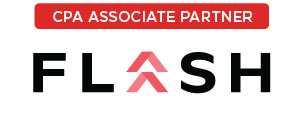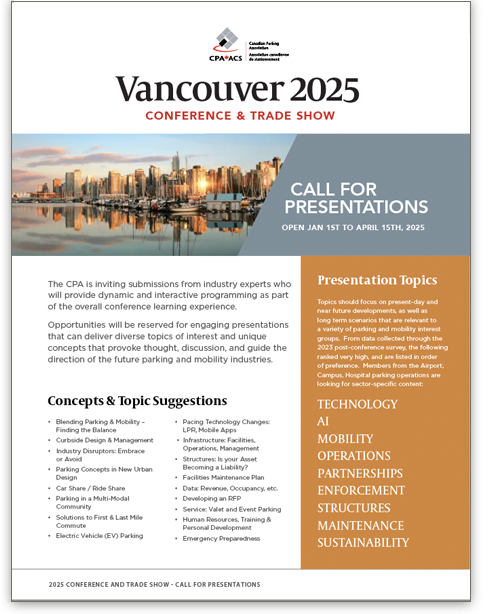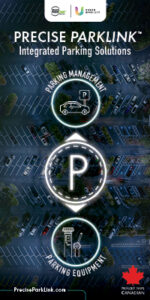By Chelsea Webster
Let’s start out with a quick poll:
What model year is your vehicle?
Okay so there was only one respondent, but I think it’s safe to say that with new car sales of 3.8 million in Canada1 and 34.5 million in the US in the last 2 years2, there are a LOT of vehicles on our roads that are a 2014 model year or newer.
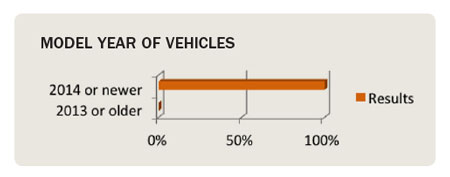
Why does this matter?
Consider this quick rundown of the major car advances to land in our vehicles.
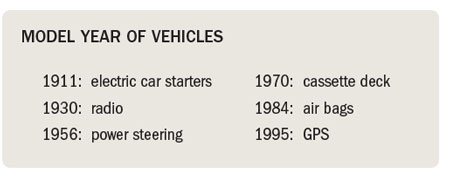
So, now that internet connectivity is showing up in cars, you can see how such a big change is cause for discussion. We’re basically taking the Internet of Things (if this term isn’t familiar, it’s the concept that everything is now connected on the internet – from your home thermostat to your heart rate monitor to the security camera on the street4) and applying it to vehicles. This concept of the fully connected and communicative vehicle is called the Internet of Vehicles (or IoV as we’ll refer to it).
IoV Fundamentals
Overall, the IoV is a massive network of connection points to the internet which are in constant communication. It’s meant to guide and supervise vehicles while providing abundant multimedia and mobile Internet application services. There are several components to understand within IoV, so let’s go over a few details.
Why would we want this? There are four main benefits of IoV5: safety (if you know the car in front of you is stopping, you can brake early); environmental damage mitigation (use less horsepower to reduce emissions); energy conservation (maximize efficiency in gas consumption); and intelligent communication (avoid a traffic jam, construction, or pay for parking).
Who is the car communicating with? There are several important groups…
By Chelsea Webster
Parking is an easy first step for a municipality to take towards becoming a smart city because the technology already exists, and it can be tested and proven with minimal resources.
Key points
- A Smart City is defined by sensors that collect information and relay it to a hub, which recommends actions based on data analysis. Smart parking is applying this concept to parking.
- Citizen and government engagement and interaction is critical to the success and long term viability of the smart city concepts.
- Smart parking is a subset of the smart city concept that’s easily implemented; pros and cons exist, however the net impact is positive.
- Many other technologies (like autonomous vehicles) are impacting the adoption of smart parking and often creating more questions than answers.
Action: Three actionable suggestions can be found at the end of the article if you are interested in implementing smart parking in your municipality.
What is a Smart City?
The term “Smart City” has been making the rounds lately, and I’d venture a guess you’ve heard it once or twice by now (or perhaps you live and work outside the realm of this concept, which is fine too). But for everyone who has heard it, as much as for those who haven’t, what does it actually mean? For all the hype, it still isn’t listed on Dictionary.com or Merriam-Webster. A smart city is a broad concept, with no precedent, and as of yet, there aren’t set standards as to what defines a city as smart. Oh. Now what?
There are a lot of working pieces involved in the smart city concept, but let’s break it down into two key components: technology (physical and virtual requirements) and data (collection and application).
1. Technology
This is the network of sensors, cameras, and other devices that get built into the…
Ty Stafford joins Impark from Securitas USA , Inc., a security services company. He led a network of 80 field offices and 14,000 employees as President of the South Region. His progressive leadership in driving profitable growth, implementing strategic solutions, and enhancing customer service solidified their position as the market leader. Ty will be relocating to Chattanooga, TN with his wife Lisa and their son, Cole.
Henrik Slipsager, Chairman of the Board of Directors of Impark said, “We would like to take this opportunity to thank Allan for his tremendous commitment over the past years. Under Allan’s leadership the organization doubled in size, and achieved a strategic expansion of its U.S. footprint. We also welcome Ty to Impark. Ty is an experienced senior level manager with a track record of success in the facilities management business through his role at Securitas. His experience positions him well to lead Impark through its next phase of growth.”
Mr. Stafford stated, “I’m thrilled to be joining the Impark family and very honored to be leading such a talented team. I see a lot of parallels between security and parking services, so I’m looking forward to collaborating on best practices to drive new services, connect deeper with our valued clients and leverage technology to improve the company’s agility.”
Imperial Parking Corporation (Impark), with U.S. headquarters in New Jersey and corporate headquarters in Vancouver, B.C. , Canada , is one of the largest parking management companies in North America with approximately 3,400 locations, and over 9,000 employees.
Now you can pay for parking with PayPal on the Green P mobile app
Toronto, December 19, 2016 – The Toronto Parking Authority is pleased to announce that the Green P Mobile App payment option is now available on all Toronto streets.
Completed ahead of schedule, all pay and display machines across Toronto now have a 4-digit location ID visible on the machines that customers can use to pay for their parking session with the Green P app.
The mobile pay feature of the app gives customers the option to pay for their parking session using their smartphone, delivers reminders before parking sessions expire, and gives customers the ability to extend their parking sessions remotely.
For even further convenience, the Green P app now includes the option of using PayPal to pay for a parking session.
“PayPal is a leading digital payments provider in Canada and we are excited to have them on board as a Green P App partner,” said Lorne Persiko, Toronto Parking Authority President. “We are constantly looking for ways to improve the parking experience for our customers. Creating partnerships with great brands like PayPal adds even more convenience to the app, and is something we will continue to do.”
“Mobile payments have become popular across Canada. One in four transactions that PayPal processes is through a mobile device. Just in time for the busy holiday season, we are delighted to help Torontonians and visitors pay for street parking from their smartphones,” said Paul Parisi, General Manager, PayPal Canada.
A GfK* study in February found that PayPal was the most popular mobile payment platform, with a majority (65%) of Canadians reporting they have used it to pay for online purchases last year. Besides using their online balance, PayPal users can pay for street parking from their bank accounts, credit cards or Visa debit…
In areas where winter weather affects the operation of a parking structure, removal of snow and ice is necessary, if not paramount, for functional performance, the public’s safety, and the long-term durability of the structure. Snow and ice removal can be difficult depending on the size, timing, and type of storm, and also the area to be maintained. For these reasons, knowing with what and how to remove snow and ice can greatly affect the operation of the structure. The basic parameters for snow and ice removal include planning, proper equipment, chemical deicers, written procedures, and how-to instruction for snow removal personnel.
Planning
When removing snow and ice, planning plays an important role for a successful operation. Basic planning and specifications for snow removal begins during the initial design phase of the parking structure. The owner, architect, engineer, contractor, and precast/prestress concrete manufacturer must all be involved in determining how snow and ice will be removed. Operations such as removal of snow and ice from the deck surface, storage of snow and ice, and the use of certain types of equipment can cause major functional and performance problems to the structure if not properly addressed during the initial design phase.
When an architect or engineer begins considering the location and layout of a parking structure, snow and ice removal operations should be based on local climate conditions. Anticipated maximum snow fall and frequency will influence planning strategies. Once parameters for snow and ice removal have been established, features for storage or removal must be designed into the structure. Removal of snow is typically handled by moving the snow to a snow chute or snow melting equipment, or by moving to and through a gate opening in exterior spandrels.
Storage of snow requires strict operating procedures and protected dumping zones to ensure the safety…
Nothing is possible without the genius of the human being
INTRODUCTION:
Smart parking: the importance of the human factor
In a world where everything is becoming automated, where machines that make our daily life simpler become more and more intelligent and autonomous, interpersonal relationships are becoming a major asset in the employment market – for the good and simple reason that it is still very difficult for a computer to simulate human interaction.
After all, our ability to interact with our entourage is the result of thousands of years of human evolution. In the work place, these skills allow teams to combine their strengths and adapt to changing environments. They are at the heart of man’s advantage over machines.1
Where parking lot management is concerned, the latest technological advances can lead us to believe that these spaces, which are so indispensable for urban vitality, will no longer need humans to function effectively. Smart parking, smart car, smart city, everything is automated: cars drive themselves, a parking lot is found and is paid for remotely thanks to smart phone apps, and city streets are decluttered thanks to real-time signage that directs us toward available spaces.
However, these devices and smart equipment are still far from able to respond with a smile to the various very human questions and requests of users or even to indicate a secure route for money used in transactions, from its entry into the payment system to its deposit into the safes of the parking lot owner.
Parking, even if it is automated and becomes more and more “intelligent,” will still need humans for a long time yet in order to guarantee operational efficiency essential for individual mobility. Moreover, it is the perfect marriage between humans and technology that allows us to target the full potential of parking both today and tomorrow.
When it…
What Lies Ahead for the Canadian Parking Industry?
It’s always fun to speculate about what the future holds. When it comes to parking, it’s particularly enjoyable because the industry is progressing so rapidly. Change has always been a hallmark of the industry as over the years parking designers, planners, and technology developers have worked to keep up with the evolution of the car.
The last few years have been among the most exciting we’ve ever experienced. Recent years have brought the groundbreaking planning innovations of Donald Shoup and his many likeminded colleagues. They’ve also brought a host of design and maintenance innovations that have made parking facilities more useful and durable than ever before. And of course they’ve brought an incredible array of new parking technologies that have transformed the parking experience for drivers while making parking more manageable and cost-effective than ever.
But as exciting as the past few years have been, there are many more exciting parking developments right around the corner. From design, to planning, to technology, we are on the cusp of an extraordinary parking age.
It’s like that song from the eighties said: The future’s so bright, we gotta wear shades.
Planning for the Future
Planning is one of the most exciting features of the parking industry today. Urban planning has undergone extraordinary change in recent years, and parking planning is keeping pace. Some of the most exciting urban planning approaches, such as New Urbanism and Complete Streets, revolve around making cities more pedestrian-friendly and reducing vehicle congestion on the streets. Parking planning plays a vital role in the success of each.
One of the most important elements of parking planning is to use parking resources to influence driver behavior. By strategically placing parking resources, cities and towns can encourage drivers to park and make the transition from driver to pedestrian…


